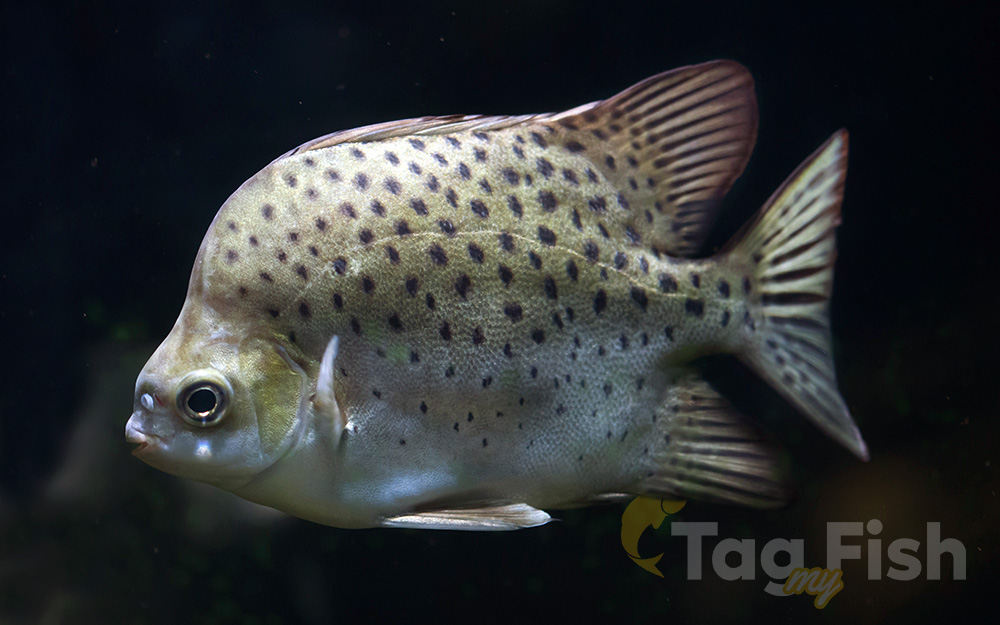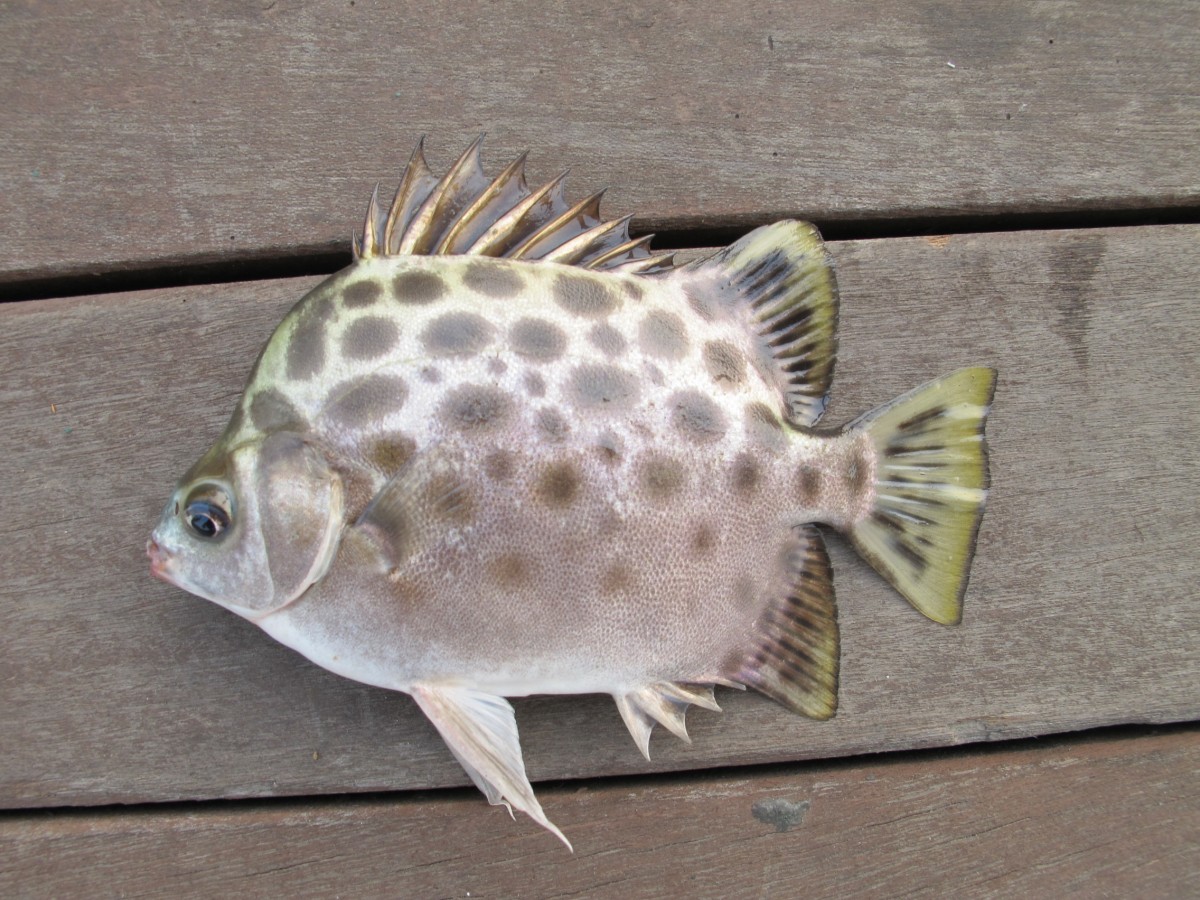Spotted scat
(Scatophagus argus)

Classification
Scatophagus argus, the spotted scat, butterfish, mia mia, spotted butterfish or tiger scat, is a species of fish in the scat family Scatophagidae. It occurs in two basic color morphs which are called green scat and ruby or red scat.
This fish is generally distributed around the Indo-Pacific region, to Japan, New Guinea, and southeastern Australia.
They live in coastal muddy areas, including estuaries, mangroves, harbours, and the lower courses of rivers. They are popular aquarium fish.
Scatophagus argus has a body which is rectangular and strongly compressed with the head having a steep dorsal profile. It has a moderately large eye which has a diameter noticeably smaller than the length of the rounded, snout. They have a small, horizontal mouth which is not protractile. There are a number of rows of small bristle like teeth in the jaws.
The dorsal fin has 10-11 spines and 16-18 soft rays, while the anal fin has 4 spines and 13-15 soft rays. Spines and rays of the dorsal fin are separated by a deep notch and the first spine in the dorsal fin lies flat. The rear margins of soft parts of the dorsal and anal fins is roughly vertical. The caudal fin is rounded in juveniles and truncate to weakly emarginate adults.
Small ctenoid scales cover the body.
The body is greenish-brown to silvery with many brown to red-brown spots. Juveniles are a greenish-brown with either a few large, dark, rounded blotches, or five or six dark, vertical bars.
This species attains a maximum total length of 38 cm (15 in).
Scatophagus argus has a wide Indo-Pacific range. It is found from the Persian Gulf, along the south Asian coast into the western Pacific. It occurs as far north as Japan south to New South Wales, New Caledonia, and Fiji. It has also been recorded from French Polynesia.
A small population was probably established in the Mediterranean Sea around Malta after a first report in 2007 (probably as a result of released aquarium fishes).
This is a species of sheltered, shallow coastal waters such as estuaries, harbours, mangrove pools, and the lower parts of fresh water streams, particularly where there are high mineral concentrations. The very small juveniles float within the surface film of the water.












